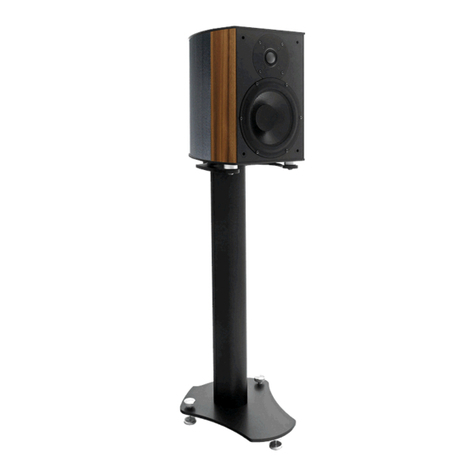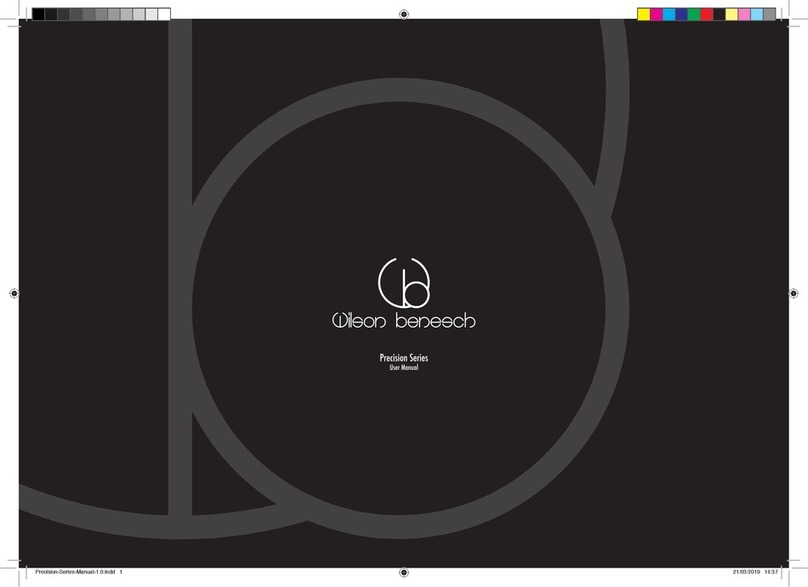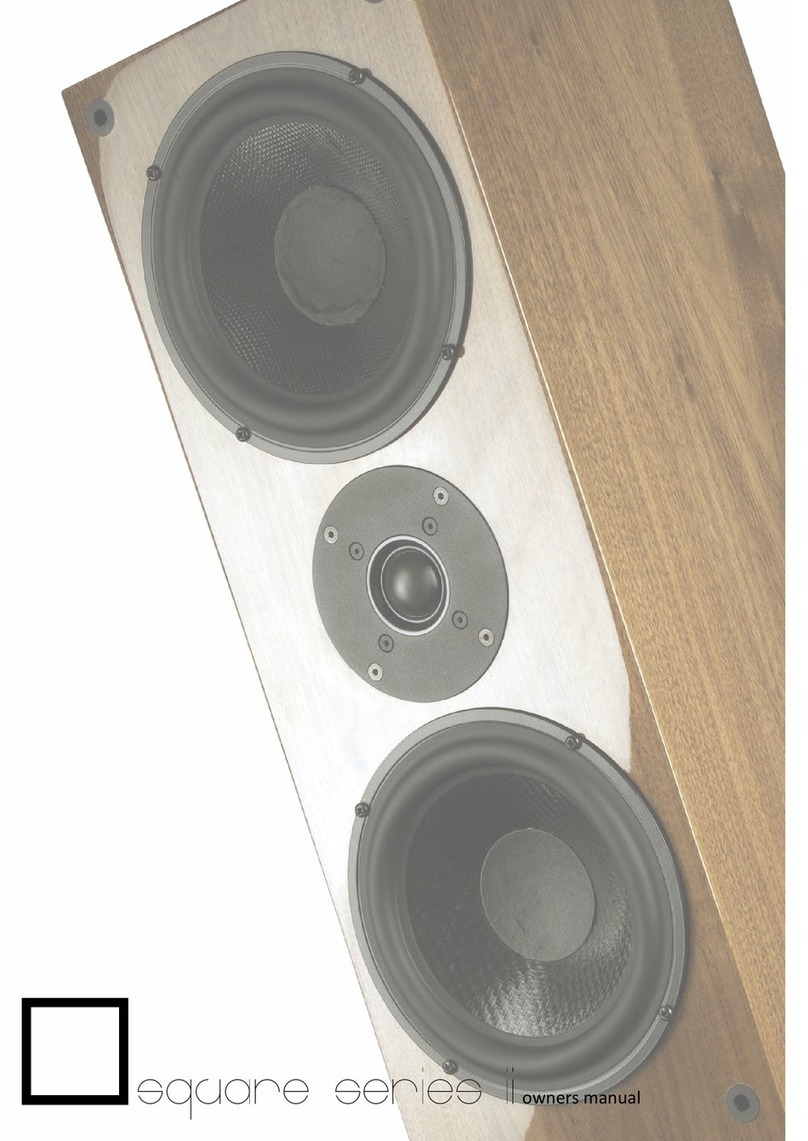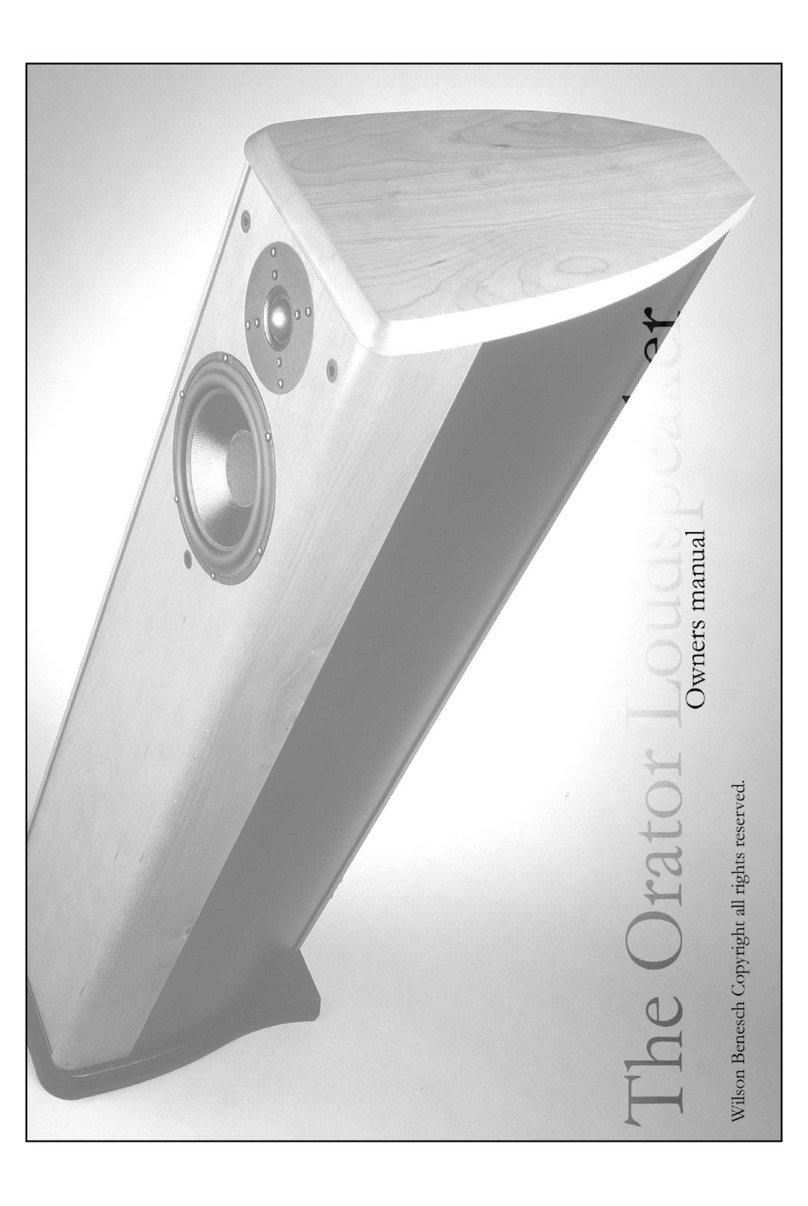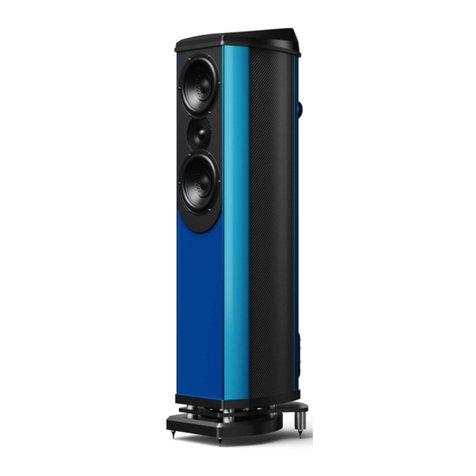• Tactic® drive units are not shielded
and should not e placed within
750mm of a television (cathode ray
tu es). All Wilson Benesch speakers
should e over one metre from any
television.
• The angle from the screen should
ideally e etween 110 and 130
degrees.
• The loudspeakers should e identical.
However Wilson Benesch
loudspeakers use identical drive units
and tweeters, so it is possi le for the
system to e comprised of more
powerful channels at the front of the
room and smaller systems eing
exploited for the surrounding field.
• The Centre channel is a critical
component in any quality cinema
system. It handles more than dialogue,
which the ear is very sensitive to, as
we are all very familiar with what the
human voice should sound like.
• All Wilson Benesch loudspeakers can
e classified as full range systems.
• Configure the su woofer just for LFE.
Spikes
The spikes are supplied installed with
some systems and so great care should e
taken when handling these systems. By
careful tests you can adjust the speaker
oth in terms of toe in, and in terms of
angle of position, should you wish to align
the speaker you should arrange for an
assistant to assist in this task. The position
of the tweeter has een designed to
function est for listeners seated in
conventional relaxed seating positions. If
required, for other situations such as
listeners on higher seating or standing, the
speakers can e tilted ack so as to incline
the tweeter.
Magnet Precautions
The motors used in all Wilson Benesch
speakers are uilt from the most powerful
magnetic material in the world, Nd.Fe.B.
Do not ring any metallic o jects or
sensitive electronic, electro magnetic or
mechanical systems into close proximity
of these devices, this includes pace makers
or other critical devices. The compan
cannot accept responsibilit for an
damage or injur caused to an such
s stems as a result of accidental
exposure. Extreme care must be taken
with all Wilson Benesch Isobaric
speakers as the Tactic® motor is
exposed in these s stems.
Terminals
Wilson Benesch recommends the use of
8mm Ring or Spade Connector ca le
terminations. A spanner is provided to nip
up the gold plated nuts, ut e careful.
Please do not over tighten the terminals.
The terminals also allow the use of anana
plugs.
Running In (70 hrs)
Like anything of good quality a period of
running in tends to see improvements in
performance. The speaker ca inet requires
time to settle in to its surroundings.
Climatic and humidity variations will take
time to adjust to, and until such
adjustments have een made the speaker
will not perform at its est. The drivers
require time to ed in physically, and relax
materially. The car on panels actually
improve in structural integrity as they age.
The quality of the sound that you hear
when you first use your Wilson Benesch
speakers, will improve quite significantly
over time, though the change will not e
instantly percepti le. Allow at least
seventy hours of running in efore
making any su ject judgements of the
speakers performance.
Surface Finish
The natural wood components are
manufactured using real-wood veneers.
They will darken over time and,
depending on the climatic and heating
conditions will stress relieve. This is a
natural phenomenon that may cause slight
changes in the dimensions of the wood.
These are typically impercepti le.
